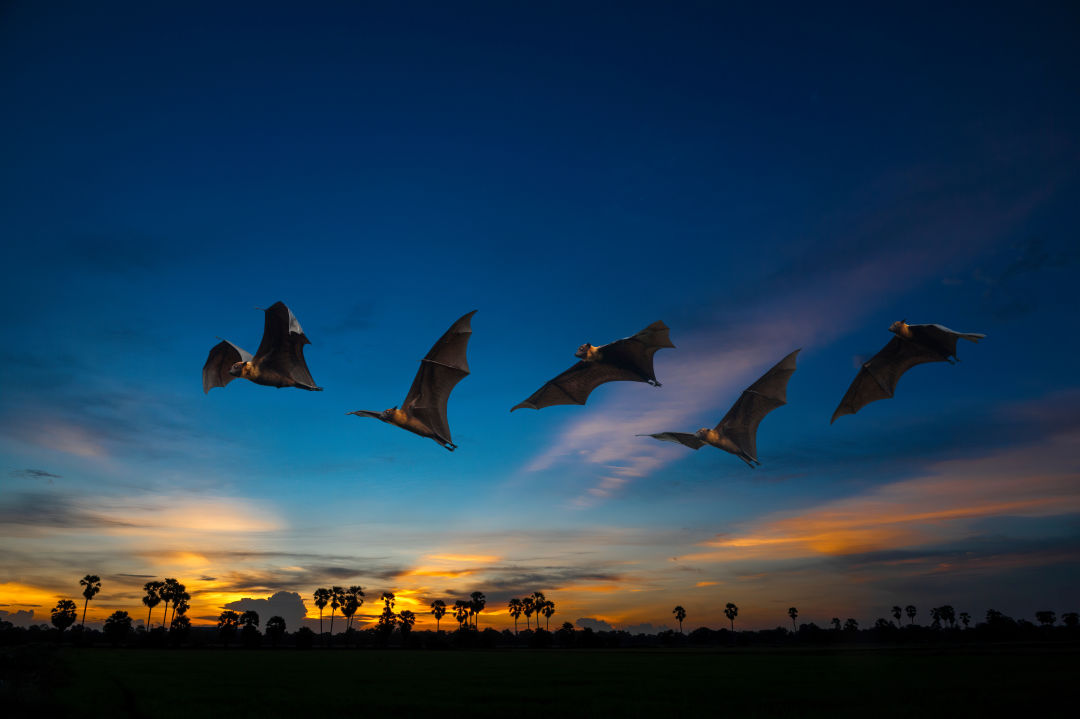Ecologist and Educator Dr. Katherine Clements Shares Nine Fun Facts About Bats

There are 13 species of bats commonly found in Florida.
This autumn, you can learn about one of nature’s most misunderstood mammals, the bat, with ecologist Dr. Katherine Clements.
Hosted at the Venice Audubon Society and Rookery, which is home to six bat houses, Clements will be leading evening EcoTalk and Walks, where guests can find out more about local bat life and witness them take to the skies for an evening flight.
A natural resources educator at the University of Florida’s Institute of Food and Agricultural Sciences Sarasota extension, Clements wants to combat negative mythologies surrounding the nocturnal animal and explain how bats are an important part of our ecosystem.
“Watching bats emerge from their houses at sunset is really the coolest thing to see. It will give you a whole new love and appreciation for bats,” says Clements.
Here are nine fun facts to pique your batty curiosity.
So Handy
Bats are Chiroptera, a unique species designation that means “hand-wing.” The identifier is a reference to the skeletal system of a bat’s wing, which resembles the structure of a human hand.
Bats About Town
There are 13 species of bats regularly found in Florida. Some of are year-round residents and others are “snow-bats” that migrate south during the winter months. Most common in Sarasota County are the Brazilian free-tailed bat, the tricolored bat, the Seminole bat, the evening bat and the yellow bat.
Hanging Out
Depending on the species, bats can live alone or in colonies of hundreds or even thousands. With no caves to roost in, Sarasota bats can make homes in trees, beneath palm fronds, nestled in Spanish Moss, in buildings or underneath bridges. It’s possible to entice bats to your neighborhood with backyard bat boxes.
Bug Bites
All of Florida’s bats are insectivores, coming out at dusk to eat mosquitos, termites, moths, beetles and other flying snacks. “Our Florida bats are busy, busy, busy eating insects, and we should love them for that,” says Clements. With the ability to catch 1,000 bugs a night (that’s a quarter to two-thirds of their body weight), they significantly reduce pests that are a nuisance to people and damage crops.
Gardner’s Delight
In addition to being nature’s pest control, bats are crucial nighttime pollinators and seed distributors. Worldwide, Clements says, 67 plant families rely on bats for pollination and more than 3,000 plants need bats for seed dispersal.
Little Bat-letes
Though small, bats are capable of great feats. In mid-flight, bats can turn 180 degrees with just three beats of their wings. The Brazilian free-tailed bat can fly in short bursts of up to 100 mph, the hoary bat can reach an altitude of 8,000 feet, and the evening bat can travel up to 340 miles during its migrational season.
Bat Signal
Despite lore, it’s highly unlikely that a bat will fly into anyone’s hair. “Their brains and echolocation apparatus are incredible," Clements enthuses. "They’re able to focus on something as tiny as a mosquito in addition to something as big as a building. They’re not bumping into anything!”
At Risk
Of the 13 species in Florida, two are considered federally endangered and nine are species of great conservation need. Around the globe, 200 bat species in 60 countries are listed as threatened. Threats to bat populations include declining food sources, destruction of habitat and land fragmentation—when livable portions of land become too spaced apart by development and there’s no greenway for migrating bats to eat and rest.
Wild Life
If you happen to encounter a bat in the wild, Clements says, “enjoy it!” Zipping around in the air, the naturally shy bat will give you ample space while putting on an aerial show. If you happen to find a wounded or ill bat on the ground, Clements reminds us that bats (like any wild animal) can carry diseases and should never be handled with bare hands. Call an expert instead.
Want to learn more about natures only flying mammal? Clements will be leading an EcoTalk and Walk on November 3 at the Venice Audobon Society and Rookery to experience bats taking flight and hosting a webinar on October, 28.



